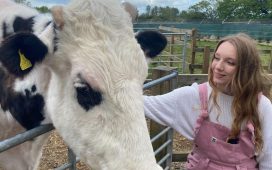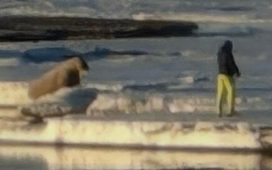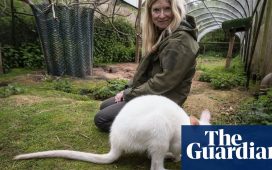A wild tangle of brambles covers this section of embankment beside a former railway line. A wren scolds from the undergrowth. Drone flies hover in the sun flecks filtered through overhanging branches of wild cherry. Butterflies chase through dappled shade. But what has stopped us in our tracks today are drifts of red campions.
It’s a glorious display, although something strange is happening to many of the flowers. Where there should be stamens, shedding white pollen, there is brown powder resembling cocoa, staining the petals. They have a sexually transmitted fungal disease, a type of red campion “anther-smut” called Microbotryum silenes-dioicae.
Microscopic threads of this parasite invade their host and, when they reach the stamens, replace pollen with their spores. Visiting insects, like the speckled wood butterfly that’s drinking nectar from the campions in front of us, spread the infection to surrounding hosts.

So far, so insidious. But red campion plants exist as separate sexes, with floral gender determined by sex chromosomes, as in humans. Half the population are females and the fungus should not be able to produce spores in these, because they have no stamens. No problem: the fungus switches their floral gender, suppressing ovary development and triggering stamen formation, transitioning them to males. This genetically agile fungus continues to evolve, mutating to parasitise other species in the campion family. If the petals of your garden dianthus (pinks) are stained brown, they too are victims of similar smut.
Charles Darwin would surely have been tickled pink by such complex adaptations in the struggle for existence. “It is interesting to contemplate a tangled bank…” he began in the final paragraph of his On the Origin of Species, using the metaphor of an embankment just like this one (with all its microhabitats and interacting species), as the arena for summarising his evolutionary concepts. There are tangled banks like this everywhere, with evolutionary tales to tell, and most yet to be deciphered. As Darwin concluded in his final sentence: “There is a grandeur in this view of life” where “endless forms … most wonderful have been, and are being, evolved”. As it is in this microscopic anther-smut, hidden from the human eye for most of its life cycle.






